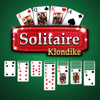Village News
Love Letters and Old Diaries – Part 1
Earlier this year, Becky Kornelson told me about the diaries and letters that her late father, Almon Reimer, left for their family to read. Almon was the son of the late John C. Reimer, one of the founding members of Mennonite Heritage Village (MHV). And we have a number of artefacts from Almon’s lumber-camp experience in our collection. So I invited Becky to write an article for us about some of the things her father had included in his letters and diaries. Here is Part I of her submission:
Old diaries, letters, photographs and love letters can be fascinating. My father, Almon Reimer, passed away this last Christmas Eve. Our family inherited many letters, diaries, and biographies. Each tells a tale of lives long ago.
Almon kept diaries from 1937 to about 1950. From them I have learned that at age fourteen a boy did a man’s work – six days a week, all summer long and Saturday evenings during the school year. His education ended at Grade eight. His father John C. Reimer was his school teacher these eight years. He took an agricultural course at one point. The rest of his education was in the ‘school of life’. Almon’s diary of Wednesday, July 4, 1937 – ‘Worked at Plett Brothers. Brought home $12.50 a week.’ I understand now my father’s strong work ethic. Retirement for him meant years of work at our local thrift shop repairing bicycles and other things.
As a child, I was fascinated that my Dad had two fingers missing. I found the date in his diary of when it happened. February 1, 1939, Dad wrote ‘Worked at Plett’s till 8 A.M. Sawed off some fingers. Went to Steinbach.’ He was a mere fifteen years old. There was not much workplace safety in those days, but he did get money from the Workmen’s Compensation Board to the sum of $355.00, which his father put away and gave to him at the time of his marriage to Annie Sawatzky.
His diaries also portrayed that entertainment was fairly simple for him as a teenager. August 27, 1939 – ‘Drove to town on bike. Was on street with boys and gals.’ And November 30, 1939 – ‘Skated in Evening.’ He also loved to listen to hockey on the radio. Saturday, December 2, 1939 he wrote ‘Black Hawks – 3. Leafs – 3. 10 minutes overtime.’
Being very curious of Mom and Dad’s romance, I delved into the love letters for a more personal glimpse. I knew they began dating at age sixteen. Often they would meet each other casually and talk together. They got to know each other’s siblings and would visit together. My Dad either walked from Blumenort to Steinbach or sometimes skated on the creek to meet his dear Annie. They often skated at the primitive outdoor rink all evening. Almon walked Annie home and skated or walked back to Blumenort.
Then the letter writing began in a serious fashion, because Almon was sent to Roblin to work in a lumber camp by his parents and the church, in preparation for becoming a CO in WWII. The letters spoke of brothers and friends of Almon who got the call from the government to come to court in Winnipeg. There they could put in their conscientious objection to fighting and taking lives of people. This call was on the minds of the young men who didn’t know if they would have to fight or could stay in Canada to do alternative service. Annie wrote in her letters back to him that she wished the war was over. It was a relief for Annie and Almon when he was called to court and told he should go back to his old job of building the round cheese boxes, as Canada was sending a lot of cheese overseas. Almon also wrote in his diary that the war was always on their minds. September 1, 1939 – ‘Germany declares war against Poland at night’. September 3, 1939 – ‘In church it was announced that England declares war on Germany’. September 10, 1939 – ‘Canada declares war.’
The physical letters themselves were also revealing. The postage stamps on the envelopes cost 1, 2, 3, or 4 cents featuring the picture of King George. The paper became coarser as fine paper was less accessible because of the war. Almon also wrote in the English Script with a few lines here and there in the Gothic script. Now there are few who can hand-write at all never mind in Gothic German.
Among Dad’s papers I found food ration stamps. These were given to allow Canadian citizens to get some kerosene, gasoline, and food products that were hard to get during the war. Almon and Annie’s wedding on August 12, 1945 had an inexpensive meal of sandwiches and store-bought cookies which they were able to get with ration coupons. They had a double wedding with Annie’s sister, Margaret and her fiancé Frank Friesen in order to cut wedding costs. While on their honeymoon in Kenora all the bells and whistles and noisemakers went off as the town celebrated the end of the war. There are two precious photos, one of Annie and one of Almon as they sit at the window of their cottage listening to the celebrations. I wonder what their thoughts were as they sat there.
Things have changed a lot from 1948 to 2018. Almon’s diary entry – January 1, 1948 ‘I came home only yesterday from my two day stay at the hospital caused by blood poison from a little scratch on my hand. We had our Christmas at my folks. We were all home for dinner (noon meal) and afternoon. We sang some and Ernie recited. Then the gifts were given. Dad brought us home on sleigh. It started storming at night.’ Today tetanus shots keep us from getting blood poisoning from a mere scratch. We take things like that for granted.
To find old writings, photos, and papers of people from our past can be a goldmine, telling us so much of what we may not have heard before.




